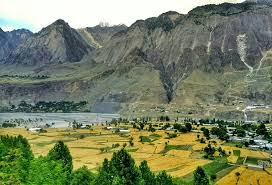Lake Saiful Malook
1. Breathtaking Natural Beauty
Lake Saiful Malook is surrounded by snow-capped peaks and lush green meadows, creating a breathtaking backdrop for romantic moments. The shimmering waters of the lake, especially when reflecting the mountains, provide endless opportunities for stunning photographs and quiet reflection.
2. Pleasant Climate
The climate around Lake Saiful Malook is temperate, particularly during the summer months. The cool mountain air is refreshing, making it a perfect escape from the heat, and ideal for long, leisurely walks along the lake’s shores.
3. Adventure and Exploration
For adventurous couples, Lake Saiful Malook offers a range of activities. Enjoy a romantic boat ride on the lake, go trekking to nearby viewpoints for stunning panoramas, or hike the trails that lead to the picturesque Malika Parbat mountain. Each activity adds a sense of adventure to your honeymoon.
4. Cultural Experiences
Engage with the local culture by interacting with the friendly people of the region. Discover local folklore about the lake and its legendary prince, Saiful Malook. Don’t miss the chance to taste traditional dishes from local eateries, enhancing your cultural experience.
5. Charming Accommodations
While accommodations directly at the lake are limited, there are several cozy guesthouses and hotels in the nearby town of Naran. Consider staying at places like the Pearl Continental Hotel or local guesthouses that offer beautiful views and comfortable amenities.
Best Time to Visit
The best time to visit Lake Saiful Malook is from April to September. During this period, the weather is pleasant, and the lake is accessible for boating and trekking. Summer is especially beautiful when the meadows are in full bloom.
Travel Tips for Your Honeymoon at Lake Saiful Malook
Plan Your Itinerary: Include must-visit spots like Naran, the nearby Lalazar meadows, and the stunning hiking trails around the lake.
Dress in Layers: Weather can change quickly, so pack layers to stay comfortable throughout your day.
Stay Hydrated: Drink plenty of water, especially if you plan on trekking or engaging in outdoor activities.
Respect Local Customs: Embrace the local culture by dressing modestly and being respectful of traditions.
Capture the Moments: Bring a camera to document the stunning landscapes and memorable experiences, especially during sunrise or sunset when the lake is at its most beautiful.
Conclusion
Lake Saiful Malook is a breathtaking destination that offers couples a perfect blend of romance, adventure, and natural beauty for an unforgettable honeymoon. Whether you’re exploring the stunning landscapes, indulging in local delicacies, or simply enjoying each other’s company by the serene waters, your honeymoon at Lake Saiful Malook will be a magical experience.





















